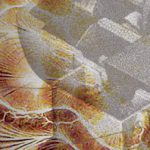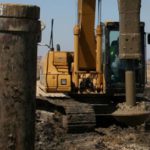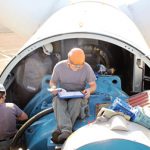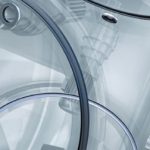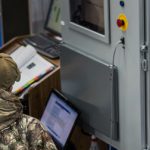The world’s first electric power generating wind turbine was manufactured by Charles Brush in 1888, and it delivered 12 kW of power reliably for 20 years (Fig. 1). The battle to make wind energy economically viable has been going on ever since, and it must be fought on many fronts. One key element in the struggle for increased reliability and efficiency is achieving excellent shaft alignment of the wind turbine generator train. Is this an uphill battle for you?
The Challenges
Many challenges face the wind turbine operator and alignment technician in achieving the goal of having in-tolerance alignment under operating conditions. A good laser alignment system with the correct feature set is an essential weapon in your arsenal to win this war.
One concern involves compliance with safety regulations. In the United States, several states do not permit the presence of a person in the nacelle when the blades are turning, yet to perform the alignment it is necessary to turn the shafts. In these cases a special safety exemption must be obtained, or if your laser alignment system allows it, accurate readings can be taken without the need to rotate the blades by more than the clearance allowed by the blades’ safety tether. Because of the enormous input to output ratio of the gearbox, at a normal operating input speed of 20 RPM to an output speed of 1800 RPM, the turbine blades would only need to be rotated 1 degree to achieve a 90-degree rotation of the gearbox’s output shaft. The best laser systems allow you to collect accurate and repeatable alignment readings with as little as 70 degrees of shaft rotation, starting anywhere and stopping anywhere. Moreover, this safety requirement in turn demands that your laser system have the ability to take readings automatically and continuously over this small angle of rotation so that enough data can be collected to be statistically meaningful. More importantly, it must allow the shafts to be rotated in either direction, particularly if the turbine blades are tethered or if the law does not permit a full rotation of the turbine with the technician present in the nacelle.
Another concern is that, in those types of turbines where stopping rotation by applying the brakes can itself affect the alignment, due to the flexibility of the anchoring structures, a true continuous sweep measurement mode is essential so that readings can be automatically collected while the shaft is in motion. This eliminates the need to have to stop the rotation by engaging the brake to take measurement points that may otherwise be influenced by this external force acting on the rotor. In these cases simply allowing the tether to stop the rotation is of benefit, as enough unloaded data will be collected before the tether stops the shafts.
Once in the nacelle, lack of space is a major concern. Very often the technician is only able to access the machines from one side. Does your laser system allow you to switch the viewpoint of the machine train? Does it let you move the generator into alignment with the gearbox even if you have to place it at the left end of the machine train on your alignment computer’s screen?
Not least of the challenges facing the alignment technician is ascending the turbine mast to the nacelle with the equipment necessary to perform the alignment. Unless the technician is athletically inclined and believes he or she can arrive at the nacelle with enough energy left to do the job (Fig. 2), valuable crane or helicopter time must be scheduled (Fig. 3). Thus, careful planning is needed to keep costs from escalating out of control.
Obtaining correct target specifications for a good alignment under running conditions to feed into your laser system is extremely important. Wind turbines are notoriously flexible structures. Thus, changes in wind speed and direction, generator load, and temperature can have a very significant effect on the shaft alignment between the gearbox and generator. A good quality coupling is essential to withstand these variations but does not excuse a poor alignment, because although the coupling may be able to take it, the bearings and the gearbox won’t. Excessive vibration and the resulting radial and axial loading on the rotating components will decrease efficiency and shorten operating life drastically. Therefore, your laser system must be able to handle target specs so that you can compensate for the positional changes that occur between the stopped (unloaded) condition at time of alignment and the running condition. One system successfully tested for monitoring positional change in the turbine generator train is Permalign®. An extensive study performed by Pruftechnik and Nordex in Germany demonstrated its viability. Immensely valuable data was collected that permitted the generator and gearbox to be misaligned in such a way that they would grow into alignment with each other under average operating conditions (Fig. 4). Vibration was significantly reduced, and operating efficiency and longevity increased.
The Alignment
Mounting your brackets can be a challenge in tight spaces. Does your system offer compact magnetic brackets with offset adapters as well as chain brackets? In Fig. 5the laser emitter is mounted on a magnetic bracket with offset adapters directly to the brake disc on the gearbox output shaft, behind the flex plate of the fiber spool piece coupling. The disc brake mechanism impedes a full rotation of the shafts.
The vertical adjustment of the gearbox is usually undertaken with hydraulic jacks or with conical counter-rotating adjustment pads, rather than with shims (Fig. 6). This requires your laser system to be able to simultaneously monitor vertical and horizontal moves, in real time.
Another critically important feature your laser system should possess is “standard deviation.” Since time is of the essence and shaft rotation may be limited, it is very important for the technician to be able to assess the quality of his or her readings immediately, while simultaneously eliminating needless repeatability checks. The ability to individually disable aberrant measurement points within a set of readings is imperative. For a greater understanding of the subject of measurement quality and standard deviation in shaft alignment readings, we refer the reader to a PowerPoint presentation, as well as an article on turbine alignment, which can be found on LUDECAwind’s Web site, listed at the end of this article.
Only the best laser alignment systems unite all of the necessary features and functionality required to perform accurate and timely wind turbine shaft alignment. This is one critical aspect of wind turbine maintenance where skimping with a cheap laser system will cost you dearly. Buying the right system pays off immediately in labor savings, operational efficiency and, crucially, in unnecessary repairs and their concomitant unscheduled downtime.




















